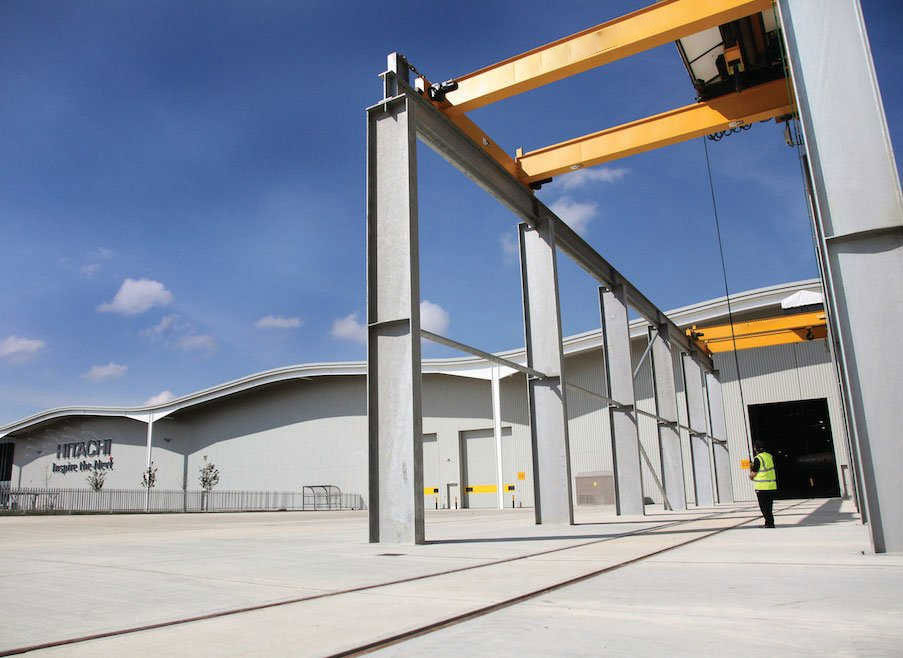Manufacture of overhead cranes for train manufacturing plants
Demand for overhead cranes in manufacturing plants is as strong as ever. The case we share today is a custom-made overhead crane for a British train manufacturing factory. A European rail company has invested in a major new train manufacturing facility in the UK. The investment enables the group to manufacture up to 35 metro, commuter and high-speed intercity trains per month. To ensure the smooth progress of the project, they invited a crane manufacturer to design a series of overhead cranes for the factory.
The role of bridge crane in train manufacturing plant
Through investigation and research, the crane company provided 9 bridge cranes for the factory. Two of them are 40-ton bridge cranes installed to unload off-site manufactured railway carriages. The machines are mounted on high-lift bogies, allowing them to be moved safely and easily around the factory.

The high-lift system allows additional equipment to be installed below the crane operating area. The crane company also installed fixed gantry frames on the production line to allow technicians easy access to the carriages for installation.
In addition, the company has installed a further seven cranes with a lifting capacity of 10 or 15 tonnes to transport materials and components to workstations around the factory. All nine cranes are of double box girder construction and deploy Crane Company hoists.
Due to the tight timeline of this contract, the crane company had to work closely with the main contractor to manufacture and deliver the crane within the specified delivery time. This means installing crane beams before adding a roof to the building and ensuring they are protected from the weather.
As production deadlines are critical in the rail industry, it is vital that cranes are as reliable and safe as possible, so crane speeds have been optimized to enable efficient product flow and ensure load safety and stability.
The crane company also provided an anti-collision system, with multiple cranes sharing the same track, and an all-weather paint system on the exterior cranes for extra protection.
What can we learn from this
In this case, in addition to flexible design based on site conditions, the crane company can also rely on its rich experience to make reasonable arrangements for some frequently faced problems. Cranes, for example, must be designed to provide the highest possible safety and stability in any situation, especially when handling heavy loads. This includes optimizing crane speed to ensure load safety and stability. If there are multiple cranes sharing the same track in a factory, anti-collision systems need to be installed to prevent accidents. Taking into account possible future changes or expansions, the crane design needs to have some flexibility to adapt to changes in future production needs.
Dongqi Crane has extensive experience in designing overhead cranes. If you need a customized overhead crane, you can contact us.
